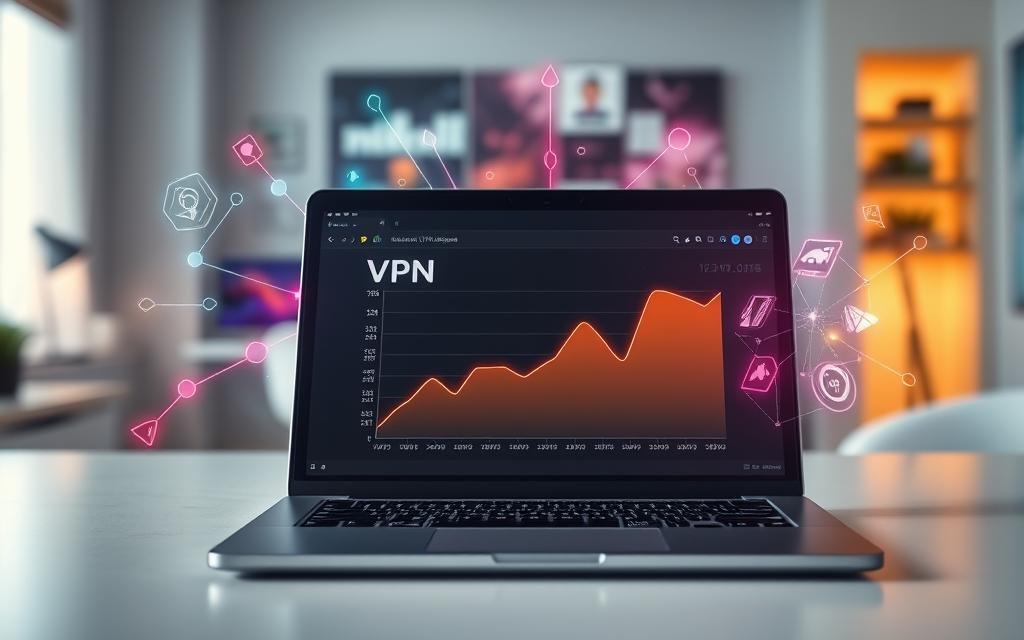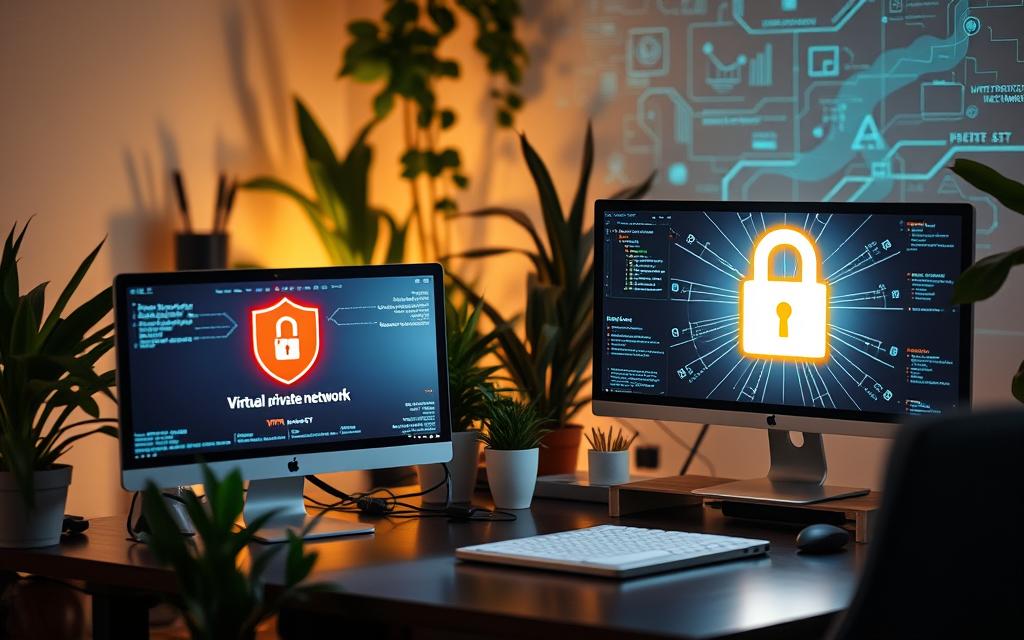Understanding Ransomware: How to Prevent and Avoid Attacks
In the digital age, what is ransomware and how to avoid it has become a critical question for individuals, businesses, and organizations alike. Ransomware is a type of malicious software (malware) designed to block access to a victim’s data by encrypting it and demanding payment in exchange for the decryption key. This cyber threat has surged in recent years, targeting everything from personal computers to entire corporate networks, and causing billions of dollars in losses globally. Understanding what is ransomware and learning how to avoid it is no longer optional—it’s a necessity for safeguarding digital assets. This article delves into the fundamentals of ransomware, how it operates, and actionable strategies to prevent and mitigate attacks. Whether you're a small business owner or a cybersecurity professional, this guide will equip you with the knowledge to stay one step ahead of cybercriminals.
Table of Contents
Toggle—
### What is Ransomware?
#### Definition and Purpose Ransomware is a form of cyberattack that holds digital data hostage by encrypting it and demanding a ransom to restore access. Unlike traditional malware, which may steal data or disrupt operations, ransomware focuses on financial gain by forcing victims to pay in cryptocurrencies like Bitcoin or Ethereum. The attackers typically use malicious software to lock users out of their systems, often displaying a message that outlines the ransom amount and instructions for payment. This tactic is particularly effective because it exploits the fear of losing critical information, making victims more likely to comply quickly.
#### Types of Ransomware Ransomware comes in various forms, each with distinct methods of operation. The most common type is crypto ransomware, which encrypts files and demands payment for decryption. Other variants include locker ransomware, which prevents users from accessing their devices by locking the screen or system, and scareware, which mimics ransomware attacks to trick users into paying for false solutions. There are also double extortion ransomware schemes, where attackers steal data before encrypting it, threatening to leak it if the ransom isn’t paid. Understanding these types of ransomware helps in identifying risks and preparing effective defenses.
#### Impact on Individuals and Organizations The consequences of a ransomware attack can be severe. For individuals, it may mean losing personal photos, documents, or financial records. For organizations, the impact is often more devastating, as attacks can disrupt operations, damage reputations, and lead to financial losses. According to a 2023 report by the Cybersecurity and Infrastructure Security Agency (CISA), over 50% of ransomware attacks target small and medium-sized businesses, which often lack the resources to recover quickly. The economic impact is also significant, with global ransomware payments reaching $5.6 billion in 2022, up from $4.5 billion in 2021. This rapid growth underscores the urgency of adopting robust prevention strategies.
—
### How Ransomware Attacks Work
#### The Attack Lifecycle A ransomware attack follows a structured lifecycle that begins with initial entry into a system and ends with the ransom demand. The first step is infection, which can occur through phishing emails, malicious websites, or software vulnerabilities. Once the ransomware gains access, it spreads across the network, often using exploitation techniques like exploiting outdated software or weak passwords. The next phase is encryption, where the malware locks files using strong cryptographic algorithms, rendering them inaccessible. Finally, the attackers display a ransom message demanding payment, typically in cryptocurrency, to unlock the data. This process is designed to be quick and efficient, maximizing the chances of success for cybercriminals.
#### Common Attack Vectors Ransomware attackers exploit a variety of entry points to infiltrate systems. Phishing emails remain one of the most prevalent methods, as they trick users into clicking on malicious links or attachments. These emails often mimic legitimate communications from trusted sources, such as banks or colleagues, to lower suspicion. Malicious websites are another vector, where visitors unknowingly download ransomware via exploit kits. Additionally, software vulnerabilities—such as unpatched systems or outdated applications—provide a direct path for attackers to install ransomware remotely. By understanding these attack vectors, organizations can focus on securing the most vulnerable points in their infrastructure.
#### The Role of Encryption At the heart of a ransomware attack is encryption, a process that transforms data into an unreadable format. Attackers use strong encryption algorithms, such as AES-256 or RSA, to ensure that only the decryption key can unlock the files. This makes it difficult for victims to recover data without paying the ransom. Some ransomware variants also employ double encryption, encrypting both files and databases to complicate recovery efforts. The effectiveness of encryption in ransomware attacks highlights the importance of having backup solutions and offsite storage, as these can provide a fallback option in case of an attack.
—
### Prevention Strategies
#### Backup Your Data Regularly One of the most effective ways to avoid ransomware is by maintaining regular backups of critical data. These backups should be stored offline and separate from the main network to prevent them from being encrypted in the event of an attack. Cloud storage can also be used, but it’s essential to ensure that backups are automated and tested frequently. According to a 2023 IBM Cost of a Data Breach Report, organizations that have robust backup systems are 30% more likely to recover from ransomware attacks within 24 hours. This strategy not only reduces downtime but also minimizes financial losses.
#### Update Software and Systems Outdated software and unpatched systems are prime targets for ransomware attackers. Cybercriminals often exploit known vulnerabilities to install malware on a victim’s network. Therefore, keeping software and systems up to date is a crucial step in preventing ransomware. This includes updating operating systems, applications, and firmware regularly. Automated patch management tools can help streamline this process, ensuring that critical updates are applied without delay. Additionally, configuring systems to automatically install security patches reduces the risk of human error.
#### Train Employees on Cybersecurity Human error is a major contributor to ransomware attacks. Phishing emails, for example, rely on users clicking on malicious links or attachments. Employee training programs can significantly reduce this risk by teaching staff how to recognize suspicious emails, malicious websites, and social engineering tactics. Regular simulated phishing attacks and security awareness sessions help reinforce these lessons. According to the 2023 Verizon DBIR Report, 75% of ransomware attacks begin with a phishing email, emphasizing the need for ongoing education. Training employees to be vigilant not only prevents initial infection but also builds a culture of cybersecurity within the organization.
—
### Common Targets of Ransomware Attacks
#### Industries Most Vulnerable to Ransomware While ransomware can target any organization, certain industries are more susceptible due to their reliance on digital infrastructure. Healthcare is a top target because of the critical need for data access in emergency situations. Education institutions, especially universities, are frequently attacked due to the large volume of data and limited budget for cybersecurity. Financial services, government agencies, and retail businesses also face high risks, as they handle sensitive information and customer data. These industries often lack the adequate defenses to counter sophisticated ransomware threats.
#### Why Organizations Are at Risk Large organizations are attractive targets for ransomware because of high-value data and reliable payment systems. For instance, critical infrastructure providers, such as power grids and water treatment plants, are targeted to disrupt essential services. Hospital networks are often compromised during peak hours when data is most needed, such as during a pandemic or medical crisis. Retail businesses may be attacked to extort money from customers or to hold supply chains hostage. By identifying vulnerable industries, companies can prioritize security investments and risk assessments to protect their digital assets.
#### Small Businesses: The Easy Targets Despite their smaller budgets, small businesses are primary targets for ransomware attacks. 60% of small businesses that fall victim to ransomware go out of business within six months, according to a 2022 Ponemon Institute study. These attacks often exploit weak security protocols, such as unprotected networks and lack of employee training. Unlike large corporations, which may have dedicated IT teams, small businesses often rely on single points of contact, making them easier to target. This vulnerability highlights the importance of proactive measures and cost-effective security solutions for all business sizes.
—
### Emerging Trends in Ransomware
#### AI-Powered Ransomware The integration of artificial intelligence (AI) into ransomware is a significant trend in 2024. AI enables attackers to analyze data patterns and predict vulnerabilities, making their attacks more targeted and efficient. For example, AI can be used to automate phishing campaigns by generating personalized emails that mimic the writing style of trusted colleagues. This personalization increases the likelihood of success, as users are more likely to click on tailored attacks. Additionally, AI can optimize encryption processes, reducing the time required to lock down a network.
#### Multi-Vector Attacks Modern ransomware attacks often combine multiple vectors to increase their chances of success. For instance, double extortion ransomware not only encrypts data but also steals sensitive information and threatens to leak it if the ransom isn’t paid. Multi-vector attacks can include phishing emails, malicious websites, and exploiting software vulnerabilities, creating a complex threat landscape. By using multiple entry points, attackers can compensate for weak defenses in one area by targeting another. This tactic requires organizations to implement layered security measures to cover all possible avenues.
#### The Future of Ransomware: Evolving Tactics As cybersecurity defenses improve, ransomware attackers are adapting their tactics to stay ahead. One emerging trend is the use of ransomware-as-a-service (RaaS), where cybercriminals rent malware to less-skilled hackers, lowering the barrier to entry. Another development is the targeting of cloud-based systems, which are often underestimated in security. Ransomware attacks are also becoming more persistent, with some campaigns running for weeks before paying the ransom. These evolving tactics mean that prevention strategies must be continuously updated to address new threats effectively.
—
### Prevention Tools and Technologies

#### Implementing Firewalls and Antivirus Software Firewalls and antivirus software are essential tools for preventing ransomware. Firewalls monitor network traffic and block unauthorized access, while antivirus programs scan files for known malware. However, traditional antivirus may not detect new ransomware variants, so real-time threat detection and behavioral analysis are becoming increasingly important. Next-generation firewalls (NGFWs) and endpoint detection and response (EDR) systems offer advanced features like intrusion prevention and machine learning-based analysis to identify and block ransomware at the earliest stages.
#### Segmenting Networks and Using Access Controls Network segmentation is a key strategy in avoiding ransomware attacks. By dividing networks into smaller, isolated segments, attackers are limited in their ability to spread malware across the entire system. Role-based access controls (RBAC) further enhance security by restricting user permissions based on their responsibilities. For example, administrative users can access critical data, while regular employees are limited to only what they need. This strategic approach reduces the potential damage of an attack and slows down its spread.
#### Monitoring and Detecting Threats Continuous monitoring is vital in detecting ransomware before it causes significant damage. Security information and event management (SIEM) systems analyze log data to identify anomalies such as unusual file access patterns or sudden data encryption events. Intrusion detection systems (IDS) and network traffic analysis tools also help flag suspicious activity in real time. By investing in monitoring technologies, organizations can detect threats early and respond quickly to minimize losses.
—
### Case Studies and Real-World Examples
#### The Colonial Pipeline Attack (2021) In May 2021, the Colonial Pipeline suffered a ransomware attack that disrupted fuel supply across the southeastern United States. The attack, attributed to the DarkSide ransomware group, began with a phishing email that infected the network. The resulting outage cost the company $4.4 million in ransom payments and led to revenue losses in the hundreds of millions. This case highlights how ransomware can impact critical infrastructure and threaten national security.
#### The JBS Meat Processing Company (2021) In June 2021, the JBS meat processing company was hit by a ransomware attack, forcing the shutdown of 40% of its operations. The attack disrupted the supply chain, affecting food distribution globally. The company paid a $11 million ransom to regain access to its systems, but the incident also exposed vulnerabilities in supply chain security. This example illustrates how ransomware can target industries with high operational dependencies and cause widespread economic disruption.
#### The Kaseya VSA Attack (2021) The Kaseya VSA attack in July 2021 demonstrated the risks of ransomware targeting software providers. The attack exploited a vulnerability in Kaseya’s Virtual System Administrator (VSA) software, allowing hackers to infect multiple businesses through a single attack vector. The resulting outage affected over 1,500 companies, including hospitals and schools, showcasing how ransomware can spread rapidly across connected systems.
—
### How to Detect and Respond to Ransomware
#### Early Detection Techniques Detecting ransomware early is crucial for minimizing damage. One effective method is monitoring file encryption rates, as ransomware often encrypts files rapidly. Behavioral analysis tools can identify abnormal patterns, such as sudden access to large volumes of data or unusual user activity. Network traffic monitoring is another useful technique, as ransomware attacks often involve large data transfers or communication with command-and-control servers. These tools and methods help spot ransomware before it causes irreversible damage.
#### Steps to Take During an Attack If a ransomware attack occurs, immediate response is essential. The first step is to isolate the affected systems to prevent the spread of malware. Next, identify the ransomware variant to determine the best decryption method. Data recovery should be prioritized, using previously backed-up files or cloud storage. If paying the ransom is an option, verify the credibility of the attackers and pay in cryptocurrency to avoid traceability issues. Finally, conduct a post-attack analysis to identify vulnerabilities and improve defenses.
#### Recovery and Post-Incident Measures After an attack, recovery involves restoring data from backups and rebuilding systems. Post-incident measures include updating security protocols, conducting employee training, and enhancing network segmentation. Incident response teams should also document the attack to improve future preparedness. By learning from past incidents, organizations can strengthen their resilience against future ransomware attacks.
—
### FAQ: Frequently Asked Questions About Ransomware
Q: What is ransomware, and how does it work? A: Ransomware is a type of malware that encrypts data and demands payment in exchange for the decryption key. It works by infecting systems through phishing emails, malicious websites, or exploiting vulnerabilities, then spreading across networks to lock down critical data.
Q: How can I tell if my system is infected with ransomware? A: Signs of ransomware include sudden file encryption, unusual error messages, locked systems, and demand for payment. You may also notice increased disk usage or strange network activity. Regularly monitoring system behavior can help identify ransomware early.
Q: Is paying the ransom always the best solution? A: Paying the ransom is not always the best option, as it does not guarantee data recovery. Attackers may demand more money or withhold the decryption key. However, in critical situations, paying the ransom can be a short-term solution to restore operations quickly.
Q: Can ransomware attack mobile devices? A: Yes, ransomware can target mobile devices, especially those with unsecured apps or outdated operating systems. Mobile ransomware often spreads through malicious apps, phishing links, or untrusted websites. Ensuring mobile device security is just as important as desktop protection.
Q: How often should I back up my data to prevent ransomware? A: It is recommended to back up data daily, with weekly and monthly backups as a backup of the backups. Regular backup routines ensure that data can be restored even if the primary system is compromised.
—
### A Table of Ransomware Statistics (2020–2023)
| Year | Number of Ransomware Attacks | Global Ransomware Payments | Most Affected Industry | Average Ransom Demand (in USD) | |———-|———————————-|——————————-|—————————–|———————————-| | 2020 | 500,000 | $2.1 billion | Healthcare | $400,000 | | 2021 | 650,000 | $4.5 billion | Energy | $500,000 | | 2022 | 750,000 | $5.6 billion | Education | $250,000 | | 2023 | 850,000 | $7.0 billion | Government | $1.0 million |
This table highlights the growth of ransomware over the past three years, emphasizing the increasing frequency and financial impact of these attacks. The most affected industries have evolved over time, with government agencies becoming primary targets in 2023. The average ransom demand has also risen, reflecting the rising costs of cybercrime.
—
### Conclusion: Staying Ahead of Ransomware
Understanding what is ransomware and how to avoid it is the first step in protecting digital assets from cyber threats. From prevention strategies like regular backups and software updates to emerging trends such as AI-powered attacks, the landscape of ransomware is continuously evolving. By implementing robust security measures, training employees, and monitoring network activity, organizations can reduce the risk of attacks and minimize their impact. As ransomware becomes more sophisticated, proactive planning and real-time detection are essential for ensuring business continuity. In the end, prevention and preparedness are the best defenses against ransomware.
—
Summary: Understanding Ransomware and Preventing Attacks
This article provides a comprehensive overview of what is ransomware and how to avoid it, covering fundamentals, attack mechanisms, prevention strategies, and real-world examples. Ransomware, a form of cyberattack, encrypts data and demands payment for decryption, often targeting critical sectors like healthcare and government. Prevention involves regular backups, software updates, employee training, and network segmentation. Emerging trends, such as AI-powered ransomware and multi-vector attacks, require adaptive security measures. By implementing these strategies, organizations can minimize risks and recover quickly from ransomware incidents. Understanding ransomware and its prevention is crucial for safeguarding digital assets in an increasingly threatened cyber environment.















